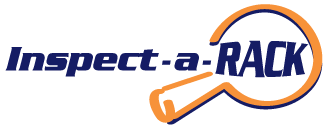Level 3 Audit
Level 3 Rack Audit is usually completed if:
A. An inspection has never been performed on the site before (by Elbowroom (Aust) Pty Ltd or one of its partner companies).
B. If drawings of the site do not exist, if load signs or other general engineering information is required.
C. If the site has been significantly changed since the previous inspection (or since it was originally installed) to the point that drawings or load engineering needs to be recreated.
D If the customer requests a complete re-analysis of the entire site.
A Level 3 rack audit includes the following activities:
- Survey site, taking general measurements of the building, the rack within it (in terms of the rack layout) and record all rack configurations, including beam levels, brands/generations of racks, upright heights and types, beam lengths and types, and any other information which may be deemed necessary to the engineering of the rack structure or to satisfy the requirements of AS4084.
- Create CAD drawings of the site layout (including aisle and/or bay location labels for identification purposes) and bay configurations. If possible, bay configurations will be generalised (e.g. typical bay elevation per rack or per aisle) to save time and cost to the end user.
- Visit site and conduct initial inspection pass
- Record all defects identified by the inspector, including minor defects (“Green Risk”)
- Provide general assessments of each rack type or configuration
- Provide the following itemised defect lists showing position, priority, defect type and recommended action:
- Red-Risk defect report (showing all items which must be unloaded or otherwise actioned immediately)
- Action defect report (showing all items which must be actioned as soon as possible, including red-risk defects)
- Full defect report (showing all items, including minor defects, action defects and red-risk defects)
- Provide defect density statistics for the site, showing comparisons area-to-area and aisle-to-aisle. This may highlight “problem areas” for the site’s operational staff. A consultation can be arranged with the inspector to help to improve or eliminate high-risk areas and to keep operators and staff safe*. Defect statistics will also compare different damage types (e.g. uprights vs. beams) this information can be used to identify incorrect loading techniques or other operational problems the users may be having with the racking system.
- Provide safe working load information unit loads, shelf loads, bay loads.
- Give sign-off on compliance and/or safety of rack after repairs have been made.
